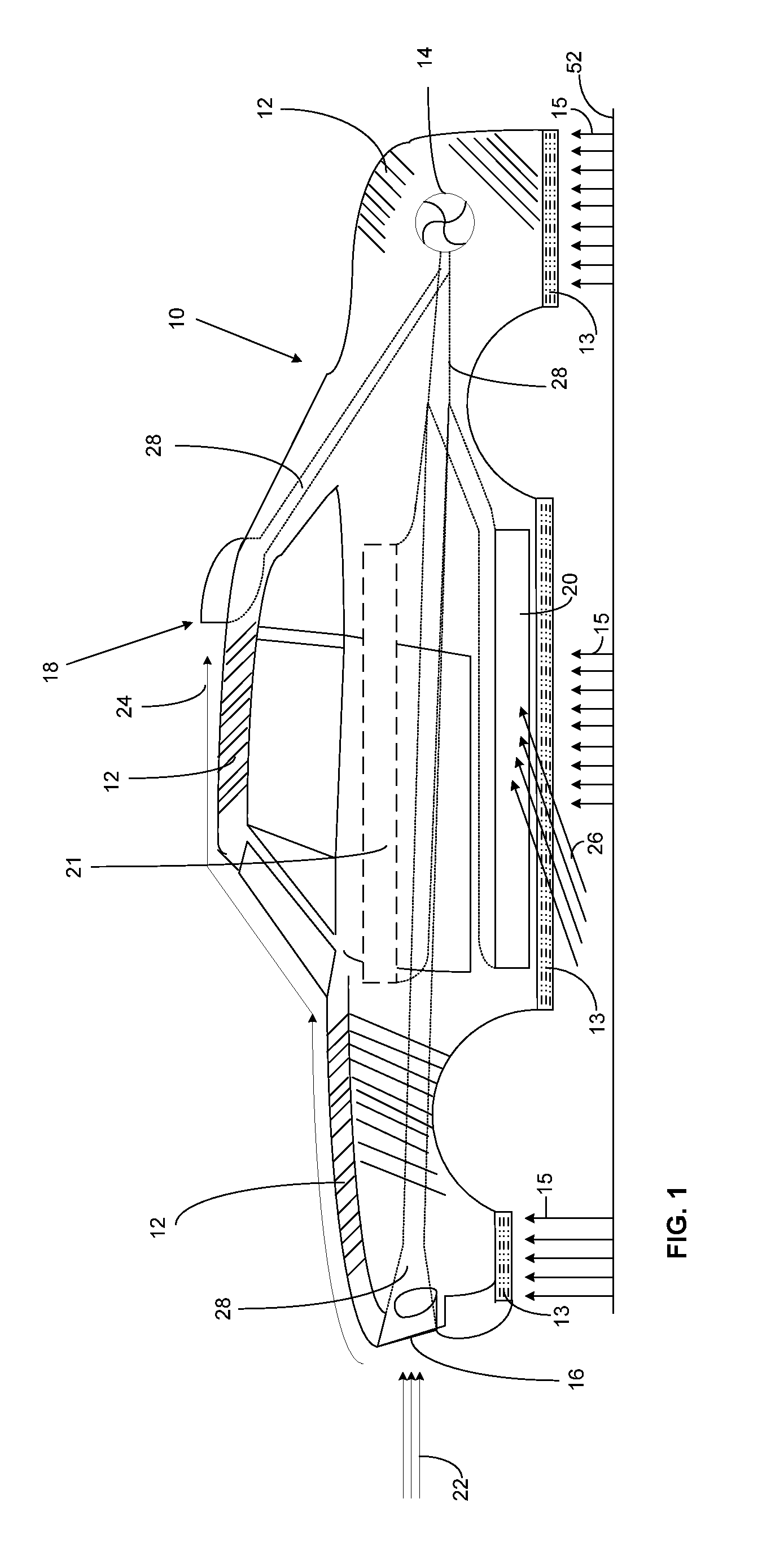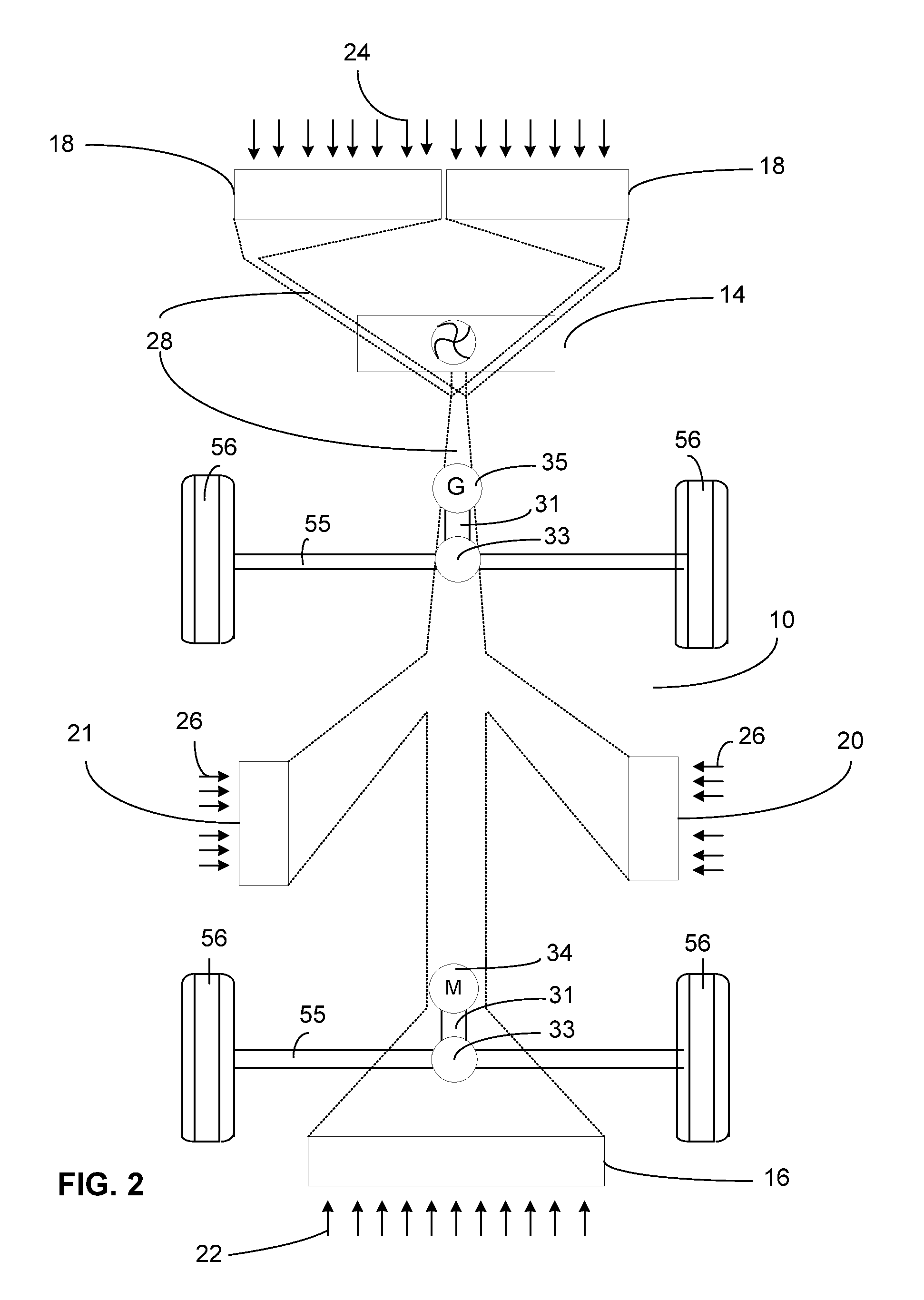Green electric vehicle utilizing multiple sources of energy
a technology of electric vehicles and renewable energy, applied in the field of vehicles, can solve the problems of dire consequences for the environment, large number of batteries, and inability to connect the permanent connection of electric motors to electrical power supply lines, and achieve the effects of destroying the environment, affecting human and animal life, and affecting the environmen
- Summary
- Abstract
- Description
- Claims
- Application Information
AI Technical Summary
Benefits of technology
Problems solved by technology
Method used
Image
Examples
Embodiment Construction
[0041]The detailed description set forth below is intended as description of the presently preferred embodiments of the invention, and is not intended to represent the only form in which the present invention may be constructed or utilized. The description sets forth the functions and sequences of steps for constructing and operating the invention. It is to be understood, however, that the same or equivalent functions and sequences may be accomplished by different embodiments and that they are intended to be encompassed within the scope of the invention.
[0042]With reference now to the drawings, the preferred embodiments will now be described in detail. The invention comprises in general a vehicle powered by electricity shown schematically in the drawings as vehicle 10, which as illustrated comprises four wheels 56 and either two rotating axels 55 as seen in FIGS. 2 and 4, in which case each axle 55 connects an opposing pair of wheels 56, or three axels 55 with one connecting a pair ...
PUM
 Login to View More
Login to View More Abstract
Description
Claims
Application Information
 Login to View More
Login to View More - R&D
- Intellectual Property
- Life Sciences
- Materials
- Tech Scout
- Unparalleled Data Quality
- Higher Quality Content
- 60% Fewer Hallucinations
Browse by: Latest US Patents, China's latest patents, Technical Efficacy Thesaurus, Application Domain, Technology Topic, Popular Technical Reports.
© 2025 PatSnap. All rights reserved.Legal|Privacy policy|Modern Slavery Act Transparency Statement|Sitemap|About US| Contact US: help@patsnap.com



